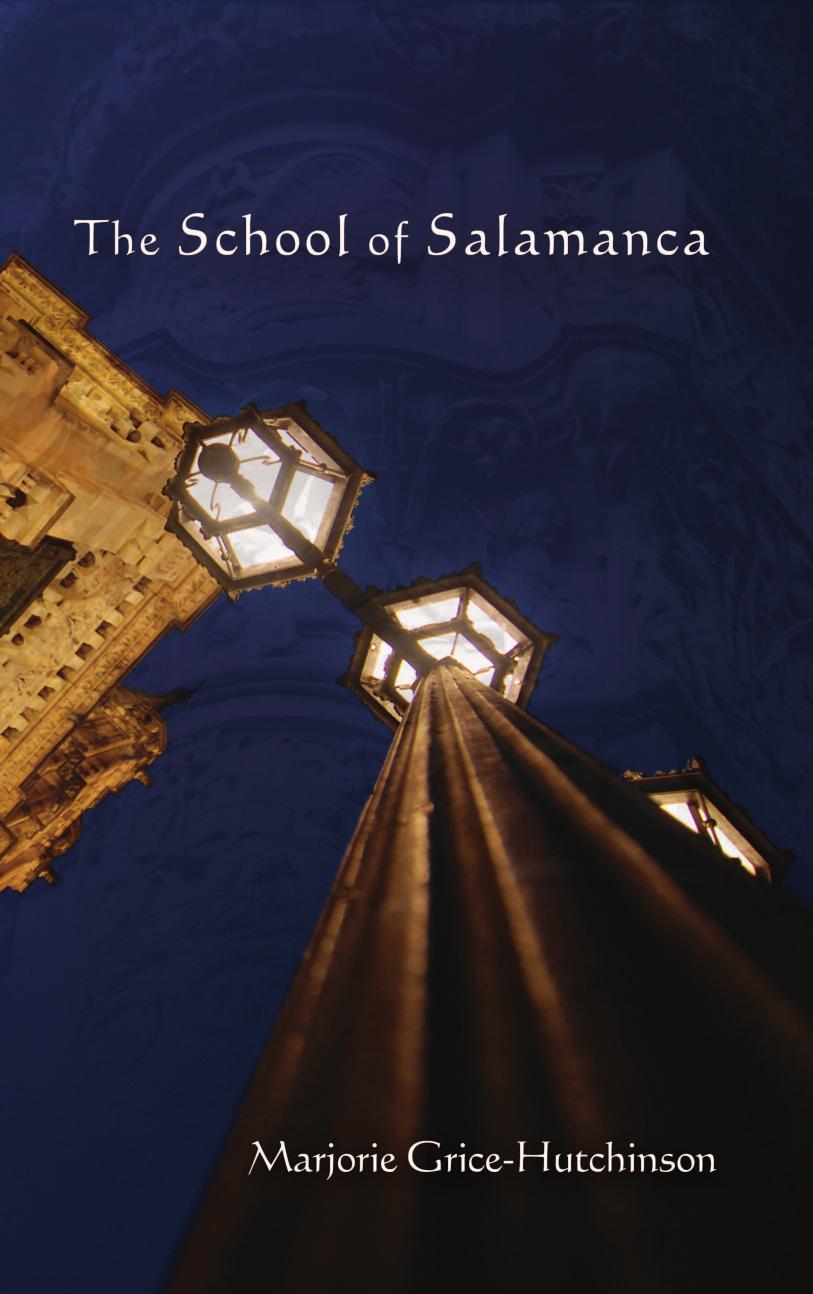The School of Salamanca by Marjorie Grice-Hutchinson

Author:Marjorie Grice-Hutchinson [Marjorie Grice-Hutchinson]
Language: eng
Format: epub, pdf
ISBN: 978-1-61016-160-2
Publisher: Oxford University Press
Published: 1952-11-06T16:00:00+00:00
____________
1 Religion and the Rise of Capitalism, 1926, p. 82.
1 E. F. Heckscher, op. cit., vol. ii, pp. 224–31, and J. Viner, op. cit., p. 41, give numerous quotations from writers of the earlier seventeenth century which present some form of quantity theory.
1 For a study of the nineteenth-century forerunners of the modern subjective school see M. Bowley, Nassau Senior and Classical Economics, London, 1937. Also E. Roll, op. cit., pp. 320–44. The subjective theory of value in the seventeenth and eighteenth centuries is discussed by R. Zuckerkandl, Zur Theorie des Preises, 1899, and by E. Morand, Theorie psychologique de la valeur jusqu’en 1776, Bordeaux, 1912.
1 Commerce et gouvernement, 1776, pp. 9–30.
2 Valeurs et monnaies, in Œeuvres, 1808, vol. iii, pp. 256–93.
3 Della Moneta, 1750, reprinted in Scrittori classici italiani di economia politica, 1803, vols. iii and iv.
1 As Malynes puts it, ‘the Law Merchant is a customary law approved by the authoritie of all Kingdomes and Commonweales, and not a Law established by the Soveraigntie of any Prince, either in the first formation or by continuance of time’.
2 De jure belli et pacis, 1625 (English translation, Oxford, 1925). Grotius’s debt to the Spanish jurists is discussed in the Introduction to the English translation, pp. xiii–xiv.
1 De jure belli et pacis, Bk. 2, ch. XII, par. xiv.
2 Ibid., Bk. 2, ch. XII, par. xvii.
1 Pufendorf’s most brilliant and comprehensive analysis of value is included in his De jure naturae et gentium, 1672 (English translation, Oxford, 1934), Bk. 5, ch. I. But interesting discussions are also to be found in his Elementorum jurisprudentiae universalis libri 2,1660 (English translation, Oxford, 1931 ), Bk. 2, Def. X, and De officio hominis et civis juxta legem naturalem, 1673 (English translation, Oxford, 1927), ch. XIV.
1 Introduction to Moral Philosophy, 1747, pp. 209–10.
1 Smith’s debt to the seventeenth-century writers on natural law is discussed by W. Hasbach, Untersuchungen über Adam Smith, Leipzig, 1891, and by G. Morrow, The Ethical and Economic Theories of Adam Smith, New York, 1923.
1 See article ‘Lessius’ in the Catholic Encyclopaedia.
2 De justitia et Jure, Louvain, 1605, Lib. 2, ch. 23, Dub. 4.
1 Comentarii in Secundam Secundae D. Thomae de contractibus, Lyons, 1617, see especially pp. 9, 11, 32–34, 357, 573–8.
2 See article ‘Lugo’ in the Catholic Encyclopaedia.
3 J. Brodrick, The Economic Morals of the Jesuits, London, 1934, p. 89.
1 De Justitia et Jure, Lyons, 1642, Disp. XXVI, sec. iv, par. 41–44.
1 Sic. This factor is included by mistake among those that determine the natural or extrinsic price of money. See the Note that follows.
2 ‘It is to be noted with Lessius, Molina, and Salas, that the excess of this unequal value which money has in different places is not derived only from the higher intrinsic value of money, proceeding from its superior metal content or higher legal tale, but may also be caused by a diversity in its extrinsic value. Thus, in the place to which the money is sent there may be a general scarcity of money, or more people may require it, or there may be better opportunities for doing business with it and making a profit.
Download
The School of Salamanca by Marjorie Grice-Hutchinson.pdf
This site does not store any files on its server. We only index and link to content provided by other sites. Please contact the content providers to delete copyright contents if any and email us, we'll remove relevant links or contents immediately.
International Integration of the Brazilian Economy by Elias C. Grivoyannis(86501)
The Radium Girls by Kate Moore(11867)
Turbulence by E. J. Noyes(7895)
Nudge - Improving Decisions about Health, Wealth, and Happiness by Thaler Sunstein(7460)
The Black Swan by Nassim Nicholas Taleb(6948)
Rich Dad Poor Dad by Robert T. Kiyosaki(6319)
Pioneering Portfolio Management by David F. Swensen(6170)
Man-made Catastrophes and Risk Information Concealment by Dmitry Chernov & Didier Sornette(5878)
Zero to One by Peter Thiel(5638)
Secrecy World by Jake Bernstein(4594)
Millionaire: The Philanderer, Gambler, and Duelist Who Invented Modern Finance by Janet Gleeson(4300)
Skin in the Game by Nassim Nicholas Taleb(4123)
The Age of Surveillance Capitalism by Shoshana Zuboff(4118)
The Money Culture by Michael Lewis(4027)
Bullshit Jobs by David Graeber(3994)
Skin in the Game: Hidden Asymmetries in Daily Life by Nassim Nicholas Taleb(3868)
The Dhandho Investor by Mohnish Pabrai(3637)
The Wisdom of Finance by Mihir Desai(3607)
Blockchain Basics by Daniel Drescher(3430)
